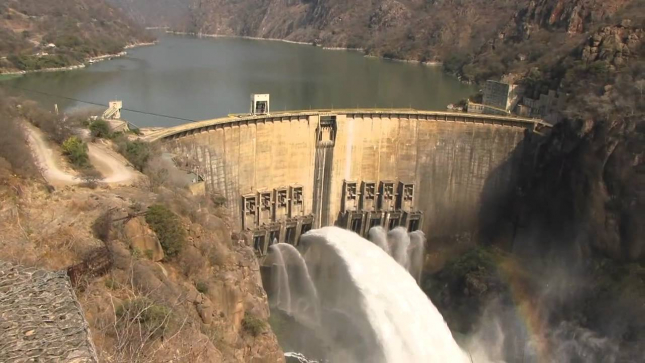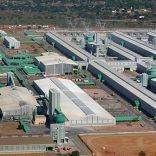Algeria to establish electrical equipment company in Mozambique
Mozambique: HCB debunks reports of imminent power production crisis due to lack of water – Carta

File photo: Carta
The Cahora Bassa Hydroelectric Plant (HCB) denied yesterday that a crisis in production and supply of electricity was imminent due to “adverse hydro-climatic factors”.
Earlier this week, Carta de Moçambique heard suggestions from senior sources at HCB that the hydroelectric plant had useful storage levels in the reservoir below 5%, which, if the El Niño phenomenon (severe drought) in the region worsens, could paralyse the production and supply of electricity.
In addition to this allegation, our sources had reported an alleged failure in the management of the reservoir. They said that the current levels – the aforementioned 5% – of the reservoir’s reserve were the result of three unnecessary discharges between September and December of last year.
‘Carta’ submitted these comments to the HCB Board of Directors this week and the response came in the form of a press release, to be distributed to the general media on Thursday. According to the HCB note, current storage levels are at 21%.
“At the end of the first period of the 2024/2025 rainy season, on 31 December 2024, the reservoir level reached 305.20 metres above mean sea level, which corresponds to 21.19% of useful storage. Seasonal climate forecasts from the Southern Africa Regional Climate Outlook Forum 29 suggest the possibility of the La Niña phenomenon occurring by the end of the 2024/2025 rainy season, with a high probability of normal rainfall in this region, particularly in the Zambezi Basin,” the communique reads.
On the other hand, HCB denies having carried out any discharges in 2024. “Associated with the hydrological management measures, which included the suspension of any discharge throughout 2024, HCB expects to recover, by the end of 2025, the storage level that will allow it to achieve hydro-energy production with the potential to meet the needs of the country and the region, in the current year and subsequent years,” it says.
In addition to rejecting these very serious allegations, HCB boasts of its operational results, stating that in 2024, it achieved a total production of 15,753.52 GWH.
“In an adverse hydro-climatological context characterized by a severe drought caused by the occurrence of the El Niño phenomenon, the negative impact of which led to the adoption and implementation of management measures for the operation of the reservoir, which aimed to safeguard the hydraulic-operational safety of the dam and related infrastructures, which allowed Cahora Bassa to have better water storage levels than the dams of the upstream countries,” the press release reads.
The press release quotes Chairman of the Board Tomás Matola as saying: “The 2024 performance could generate net results of more than US$225 million, values that exceed the records of the 2023 financial year and of the entire history of HCB. As a result of this performance, it is estimated that, in 2025, HCB will contribute to the public coffers, between taxes and fees, (IRPS, IRPC, VAT and concession fee), plus dividends, with around US$292 million (around 18.5 billion meticais), which demonstrates the structuring and strategic role of the Cahora Bassa Hydroelectric Power Plant in the development of the country and in improving the living conditions of Mozambicans.”













Leave a Reply
Be the First to Comment!
You must be logged in to post a comment.
You must be logged in to post a comment.